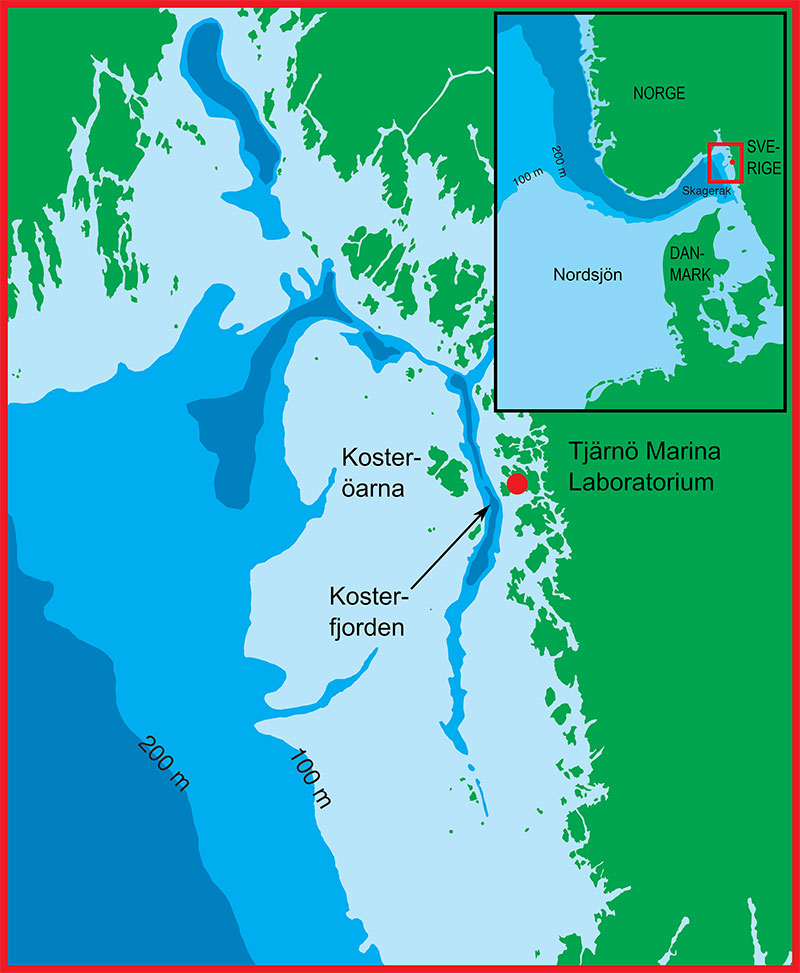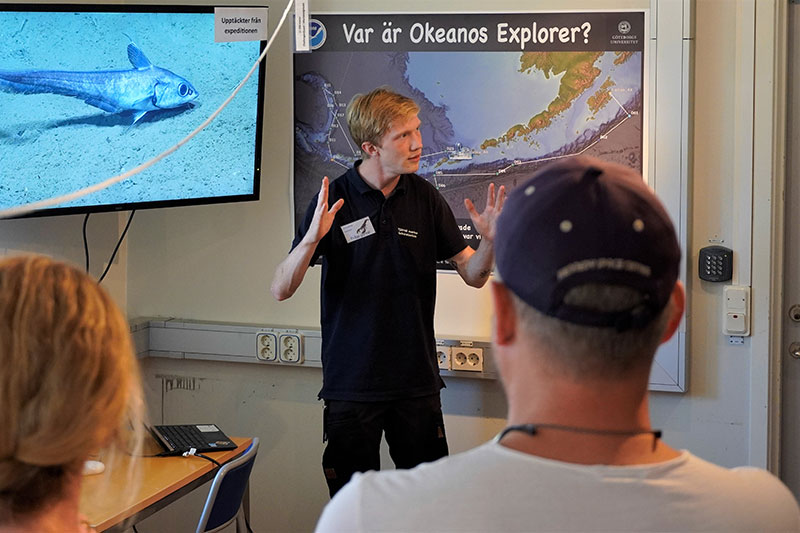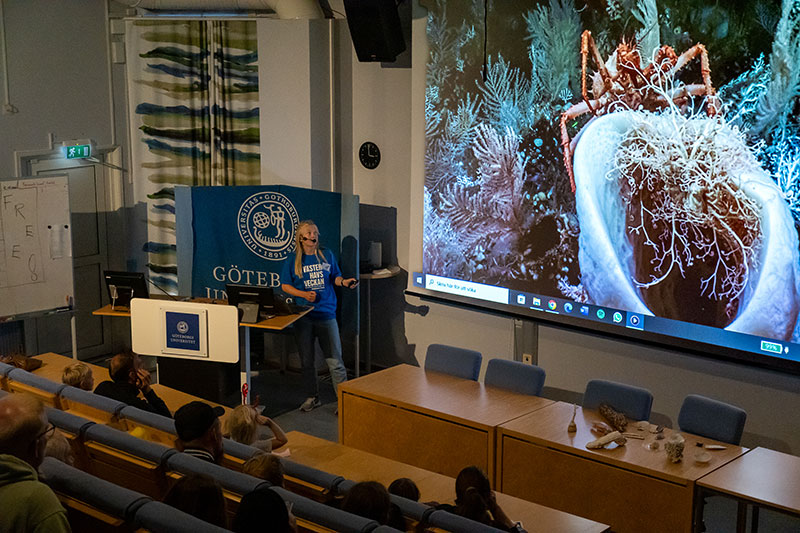Seascape Alaska 3: Aleutians Remotely Operated Vehicle Exploration and Mapping
(EX2304)
Crossing Ocean Basins - Communicating Deep-Sea Exploration Across the Globe
[ Läs på svenska ]
When Rhian Waller, a researcher at the Tjärnö Marine Laboratory in Sweden, joined the Seascape Alaska 3 expedition as the biology science lead, Tjärnö Aquarium created a new exhibit to allow aquarium visitors to dive deep into the expedition and connect with science across the globe.
When someone mentions deep-sea exploration, you likely think of many places, the high seas, deep ocean trenches, hydrothermal vents, and much more. Sweden, a country with mainly brackish ocean waters situated almost entirely on the continental shelf, isn’t typically one of those places.
The Koster fjord, however, offers Sweden a taste of what can be found in the deep. This 247-meter (810-foot) deep underwater canyon carries dense, salty water, all the way from the Atlantic Ocean to Sweden’s northwest coast. Such depths are rarely seen in Sweden, and the oceanic water that flows through the Koster fjord allows for a range of deep-dwelling life seen nowhere else in the country. The Tjärnö Marine Laboratory and Aquarium, just a stone’s throw from the Koster fjord, offers both scientists and the public alike the opportunity to comfortably explore Koster’s unique biodiversity.

Although Tjärnö Aquarium displays some of Sweden’s deepest-dwelling life, Sweden’s oceans are still far from what is usually called the “deep” sea. So, when Tjärnö-based researcher Rhian Waller joined the Seascape Alaska 3 expedition, visitors to the aquarium could dive deeper into the ocean than ever before. In a new exhibit, visitors could read about the expedition, explore the ocean’s depth with physical and digital tools, view highlights from previous expeditions, and most importantly, check out the most recent deep-sea dive from Alaska.

We, the science communicators, have introduced our visitors to tubeworms, bubblegum corals, rattail fish, marine snow, and much, much more. Through spontaneous conversations in the exhibit and highlight presentations in our auditorium, guests have been able to take part in the newest discoveries just a few hours after each dive.
High-quality visuals have been a significant help for visitors to explore findings from the expedition. Once, after looking at footage of a spider crab eating a shrimp a guest asked what ‘the little thing on the dead shrimp’ was. When replaying the footage, we saw that it was an amphipod, and our visitor had made their first deep-sea discovery!

A prevalent impression left on people unfamiliar to the deep sea is that they didn’t know ‘all that could live all the way down there’. A plethora of strange and beautiful life forms rivalling shallow habitats in biodiversity and abundance can be found at greater depths than what exists in Swedish waters. The fact that very little is known about these remote environments has instilled upon our guests a sense of what Swedes call “upptäckarglädje”, a joy of discovery. Some guests have expressed their desire to further discover the deep sea, and we’ve been happy to tell them that they can take part in the exploration from home! All they have to do is tune in to the live stream, get comfortable, and together with a team of shore-based scientists, be ready to see things never seen before.
To quote one of our younger visitors, the deep sea is ‘really cool’ and over at Tjärnö, we have to say that it’s been ‘really cool’ to explore the deep seas of Alaska together with our visitors all the way from here.
By Christian Nilsson and Lova Eveborn, Tjärnö Marine Laboratory and Aquarium
Published August 18, 2023